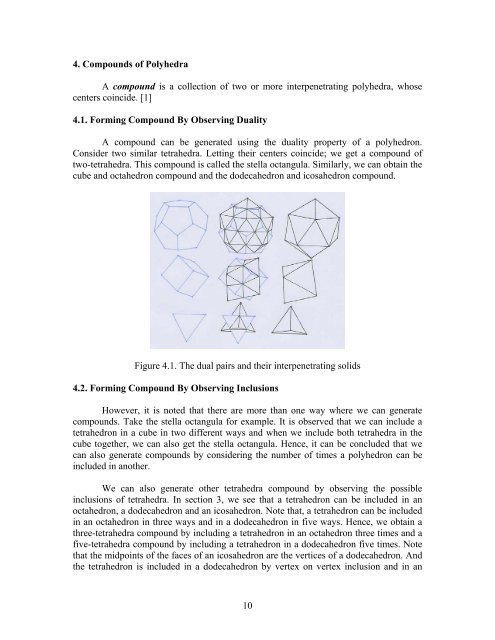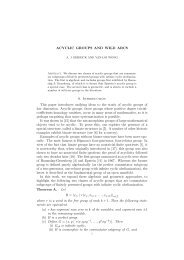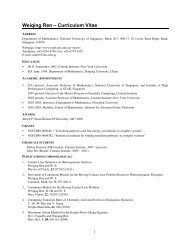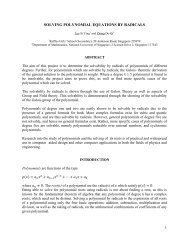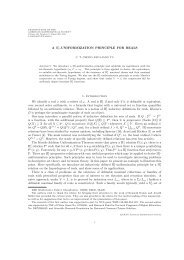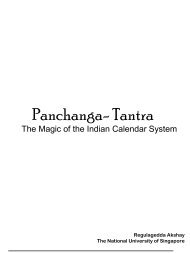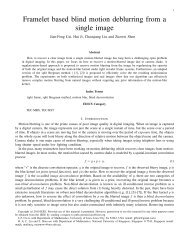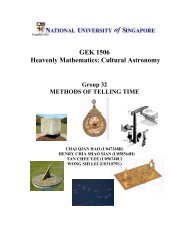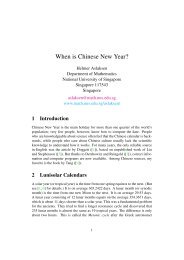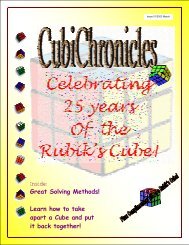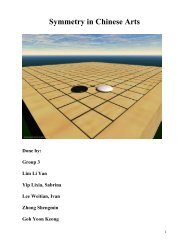Polyhedra - Department of Mathematics
Polyhedra - Department of Mathematics
Polyhedra - Department of Mathematics
You also want an ePaper? Increase the reach of your titles
YUMPU automatically turns print PDFs into web optimized ePapers that Google loves.
4. Compounds <strong>of</strong> <strong>Polyhedra</strong><br />
A compound is a collection <strong>of</strong> two or more interpenetrating polyhedra, whose<br />
centers coincide. [1]<br />
4.1. Forming Compound By Observing Duality<br />
A compound can be generated using the duality property <strong>of</strong> a polyhedron.<br />
Consider two similar tetrahedra. Letting their centers coincide; we get a compound <strong>of</strong><br />
two-tetrahedra. This compound is called the stella octangula. Similarly, we can obtain the<br />
cube and octahedron compound and the dodecahedron and icosahedron compound.<br />
Figure 4.1. The dual pairs and their interpenetrating solids<br />
4.2. Forming Compound By Observing Inclusions<br />
However, it is noted that there are more than one way where we can generate<br />
compounds. Take the stella octangula for example. It is observed that we can include a<br />
tetrahedron in a cube in two different ways and when we include both tetrahedra in the<br />
cube together, we can also get the stella octangula. Hence, it can be concluded that we<br />
can also generate compounds by considering the number <strong>of</strong> times a polyhedron can be<br />
included in another.<br />
We can also generate other tetrahedra compound by observing the possible<br />
inclusions <strong>of</strong> tetrahedra. In section 3, we see that a tetrahedron can be included in an<br />
octahedron, a dodecahedron and an icosahedron. Note that, a tetrahedron can be included<br />
in an octahedron in three ways and in a dodecahedron in five ways. Hence, we obtain a<br />
three-tetrahedra compound by including a tetrahedron in an octahedron three times and a<br />
five-tetrahedra compound by including a tetrahedron in a dodecahedron five times. Note<br />
that the midpoints <strong>of</strong> the faces <strong>of</strong> an icosahedron are the vertices <strong>of</strong> a dodecahedron. And<br />
the tetrahedron is included in a dodecahedron by vertex on vertex inclusion and in an<br />
10


